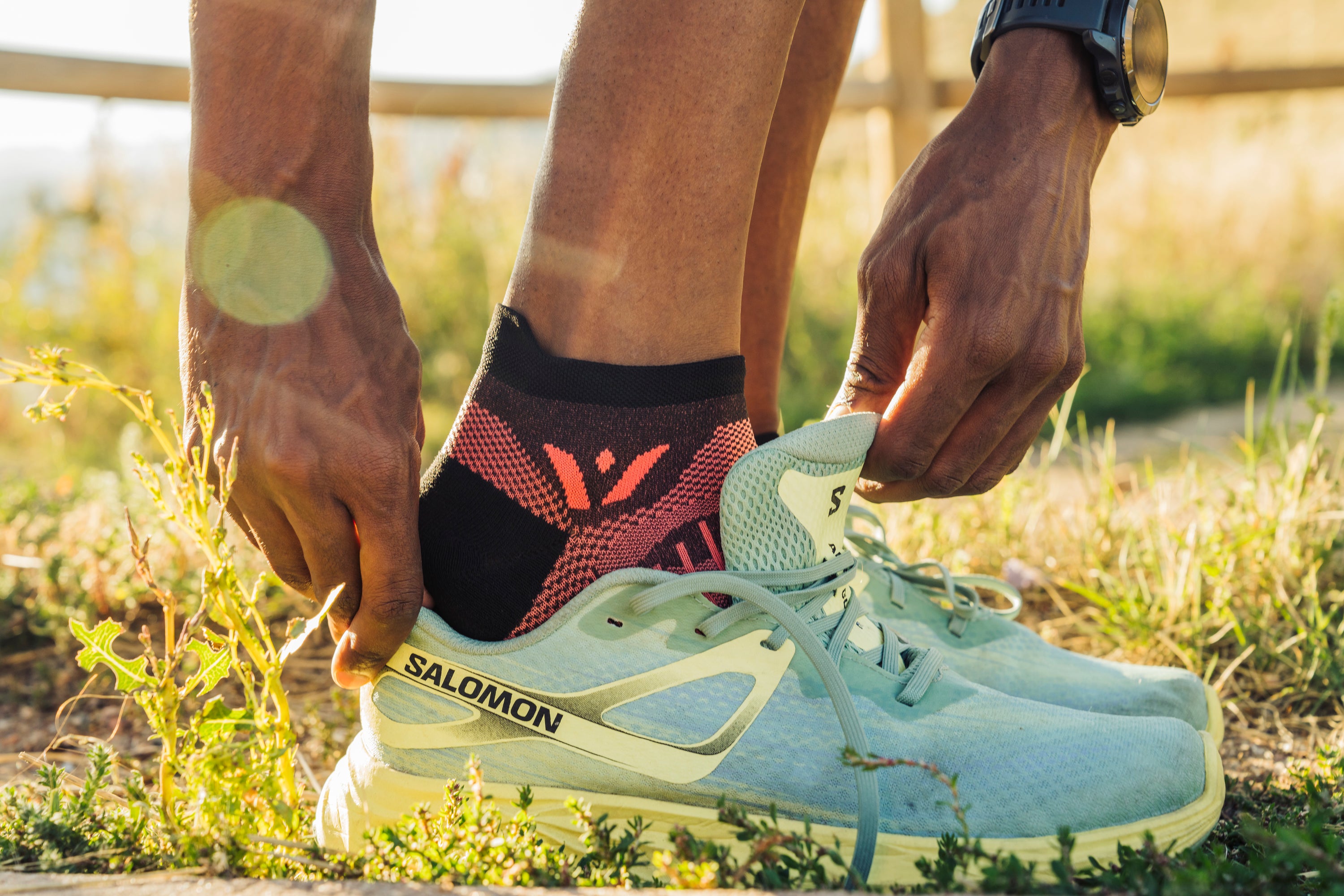Your Cart is Empty

How To Prevent Blisters
If you’re an avid runner or hiker, you’re likely familiar with a frustrating problem: blisters. They can pop up anywhere - your toes, your heels, the ball of your foot - and cause adventure-ending pain and tenderness. The key to avoiding painful blisters is to stop them before they develop: here’s how.

To avoid blisters, you have to know what causes them. Typically blisters are caused by a combination of heat, a pressure point, and moisture. When it comes to adventures that require long periods on your feet, friction is not your friend. Our feet tend to heat up and sweat during physical activity, and this combo leaves skin soft and ready for blisters to form. Partner this softness with an irritation area in your shoe, and before you know it you’ve got a blister. This irritated area of skin will swell with fluid, leaving you limping and grimacing down the trail.
To prevent these vexing pain points, you need to eliminate the causes. Choose moisture-wicking, breathable socks to keep sweat away from your skin and stop blisters from forming. Breathable fabrics will help reduce heat and friction while you run, or hike. Finally, eliminate pressure points as quickly as possible when they arise. Replace your shoes when they start to cause irritation in sensitive areas and opt for socks without a toe seam to eliminate friction in the toe box.

If you’re breaking in a new pair of shoes or you happen to start feeling hot spots on your feet during your workout, don’t ignore or try to push through the pain. A small square of athletic or kinetic tape can work wonders on a hot spot to prevent a blister from forming and get you back to the trailhead - or you can try a blister pad from a drugstore in between your skin and your sock to stop the rubbing. Bring extra socks along on your adventure if you’re at risk of soaking your socks in a puddle or creek. For long hikes, choose a sock from the FLITE XT TRAIL® line, the Merino Wool and Olefin fibers combine for maximum dryness, just ring out any moisture and continue your trek.
Lastly, turn back to the car if you can’t stop the friction with what you have on hand. A blisterless foot is a happy foot, so try to avoid letting that sensitive area from progressing into a full-blown blister. Blister prevention is critical to staying on the trail longer and keeping your feet happy. Remember, pay attention to hot spots and stop blisters before they start!


